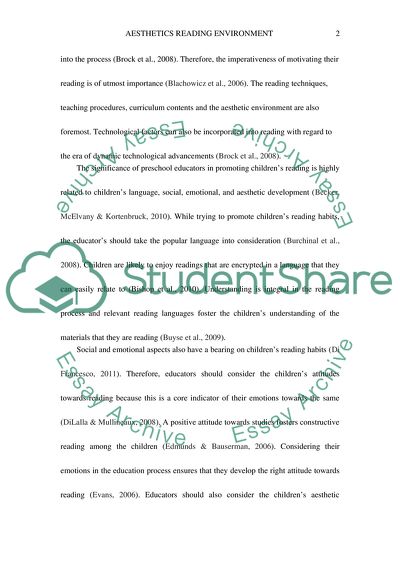Cite this document
(“Preschool Childrens Reading Research Paper Example | Topics and Well Written Essays - 1750 words”, n.d.)
Retrieved from https://studentshare.org/education/1700548-the-effect-of-aesthetics-reading-environment-on-preschool-childrens-reading-motivation
Retrieved from https://studentshare.org/education/1700548-the-effect-of-aesthetics-reading-environment-on-preschool-childrens-reading-motivation
(Preschool Childrens Reading Research Paper Example | Topics and Well Written Essays - 1750 Words)
https://studentshare.org/education/1700548-the-effect-of-aesthetics-reading-environment-on-preschool-childrens-reading-motivation.
https://studentshare.org/education/1700548-the-effect-of-aesthetics-reading-environment-on-preschool-childrens-reading-motivation.
“Preschool Childrens Reading Research Paper Example | Topics and Well Written Essays - 1750 Words”, n.d. https://studentshare.org/education/1700548-the-effect-of-aesthetics-reading-environment-on-preschool-childrens-reading-motivation.


